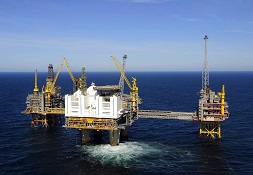Replacing Halon with Novec 1230
NOVEC 1230 is the next generation of chemical fire suppressant in place of FM200 which was a market leader for the exchange of Halon. NOVEC 1230 and its use in marine applications is approved by a number of marine agencies around the world and has been fully tested in accordance with the International Maritime Organisation MSC/Circ.848 on revised guidelines for the approval of fixed gas fire extinguishing systems, as referred to in SOLAS 74 for machinery spaces and cargo pump-rooms.

Novec 1230 fire protection fluid is a next-generation halon alternative designed to balance industry concerns for performance, human safety and the environment, which makes Novec 1230 fluid the first option to non-sustainable technologies:
•Zero ozone depletion potential
•5-day atmospheric lifetime
•A global warming potential of 1
Novec 1230 fire protection fluid offers a number of important advantages over other clean agents and CO2 in marine applications. Its low acute toxicity, combined with high extinguishing efficiency, give Novec 1230 fluid a significant margin of safety, even at relatively high extinguishing concentrations, making Novec 1230 fluid ideal for occupied spaces including
 •Engine and pump rooms
•Engine and pump rooms
•Paint lockers
•Communication and control centers
•Saves space and weight
•Fast extinguishment
•Allows flexibility in design
•No restriction of shipping
Novec 1230 fire protection fluid is a highly efficient extinguishing agent that:
•Is non-corrosive and electrically non-conductive, so it will not harm delicate electronics, radar, navigation and other equipment
•Evaporates quickly and completely
•Leaves no residue
•Can be safely used on energized equipment, helping to ensure continuity of operations during a fire emergency
This environmental profile is unmatched by any other halogenated agent, and helps make Novec 1230 fire protection fluid today’s long-term solution for protecting your high value assets.
Despite having a high boiling point, Novec 1230 is able to be effectively vapourised over a wide range of hazard temperatures.
It is therefore available to protect most hazards traditionally protected with Halon 1301 and will be particularly important in Marine applications and others where high margins of safety and long term sustainability are considered to be crucial features.
The physical properties of each halon alternative determines how much agent is required to provide an equivalent level of protection. Novec 1230 will require approximately twice as much agent by weight as the equivalent halon system, although end use design concentrations will be similar, resulting in minimal increases in storage space for the containers.
One of the advantages offered by Novec 1230’s high boiling point is that it produces a very low vapour pressure, enabling it to be transported in lightweight totes or drums as opposed to steel pressurised containers. This allows Novec 1230 to be readily air freighted and as both initial filling and recharging operations are possible by simply pouring the fluid into containers, prior to superpressurising, the filling operation is far simpler than with traditional high pressure gases.
Existing pipework may need to be replaced or supplemented, although the exact requirement for any particular system can only be determined after a detailed review of the existing installation.
 DECOMMISSIONING A HALON SYSTEM
DECOMMISSIONING A HALON SYSTEM
Decommissioning a Halon system from service is usually a two-step process. The first step, field decommissioning, takes place at the site where the fire protection system is located. During this step, the Halon cylinders are disconnected from the system hardware such as manifolds and piping. The second step usually takes place offsite and involves reclaiming the Halon agent from the removed cylinders.
Decommissioning is undertaken to remove the existing Halon system from service, replace the Halon system with an alternative means of fire protection, and/or recover the Halon from the system so it can be made available for use in other applications.
 As Halon supplies become increasingly scarce, decommissioned Halon supplies will be an important source to meet the future
As Halon supplies become increasingly scarce, decommissioned Halon supplies will be an important source to meet the future
fire protection needs of critical applications.
Who Should Perform Decommissioning. Proper decommissioning procedures are required to assure that vital Halon resources are not inadvertently discharged into the atmosphere during the recovery process and to maintain a safe working environment for individuals involved in the decommissioning process. Accordingly, the decommissioning of Halon systems should only be performed by properly trained personnel.




